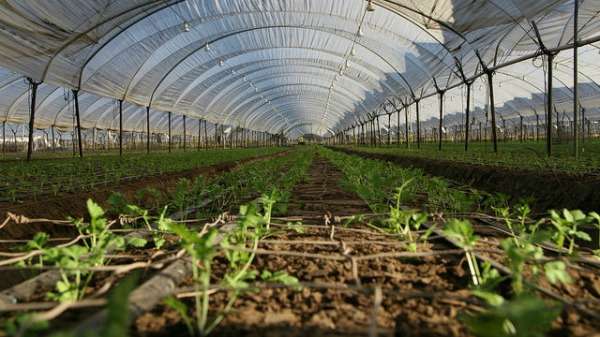Salt water quirk key to bubble desalination

A team of Murdoch University researchers have designed an efficient, small-scale greenhouse combining desalination with food production.
They say the Bubble-Greenhouse represents an easy-to-operate, low-maintenance option for remote regions and communities faced with groundwater salinity issues.
The key to the concept is its novel humidification-dehumidification (HD) process, which projects to have a much higher water-production capacity than existing small-scale desalination technologies.
In the HD system, solar or wind generation powers a regenerative blower which pushes air through finely-pored sinter discs located within a six-chamber column evaporator filled with saline water.
The result is thousands of fine bubbles, with some special properties.
"The key to our effective evaporation process is the large air/water interface produced and maintained by a unique property of salt water," PhD candidate Mario Schmack says.
"Unlike in a freshwater bubble column where bubbles would continuously collide and join together as they oscillate upwards, it has been discovered that by adding salt to a floatation chamber, bubble coalescence is inhibited by a still unexplained property."
A finer bubble stream means more surface area for evaporation.
When the saturated air exits the top of the evaporator it is channelled under pressure into a multi-stage condenser which collects fresh water and releases cooled vapour to humidify the greenhouse.
Greenhouse provides benefits around the clock
The researchers suggest a 150m2 greenhouse could produce up to 30kg of crops daily while providing additional fresh desalinated water through night-time condensation.
The Bubble-Greenhouse design is suitable for northern WA's climate, with a lightweight aluminium frame and a special polycarbonate skin that allows the penetration of 60 per cent of photosynthetically active radiation while screening out most infra-red radiation, thus helping to moderate temperatures.
Beyond this, the greenhouse components are manufactured from simple, sturdy materials that can easily be dismantled and stored, which is vital given the frequency of tropical cyclones in the region.
Mr Schmack says simplicity is at the heart of the design, as desalination technologies such as reverse osmosis have proven untenable in remote areas due to their complicated nature.
"The Bubble-Greenhouse system relies on basic technology such as regenerative blowers and technically undemanding water pumps, so it's easy to implement and easy to maintain and repair by local people with limited technical means," Mr Schmack says.
"By using the considerable bush-mechanic skills of remote people, it represents great potential for community participation and sustainability, providing a stepping stone to self-reliance for remote communities."
The project's next step is scaling-up with industry partners.
More information: "The Bubble-Greenhouse: A holistic sustainable approach to small-scale water desalination in remote regions," Desalination, Volume 365, 1 June 2015, Pages 250-260, ISSN 0011-9164, dx.doi.org/10.1016/j.desal.2015.03.021
Provided by Science Network WA




















